By Rick VanSickle
There is only one way to make Niagara Riesling great again — we just need to drink more of it.
Also in this Niagara wine report: 16 Rieslings to buy today, plus a roundup of Niagara wines coming to LCBO shelves this month.
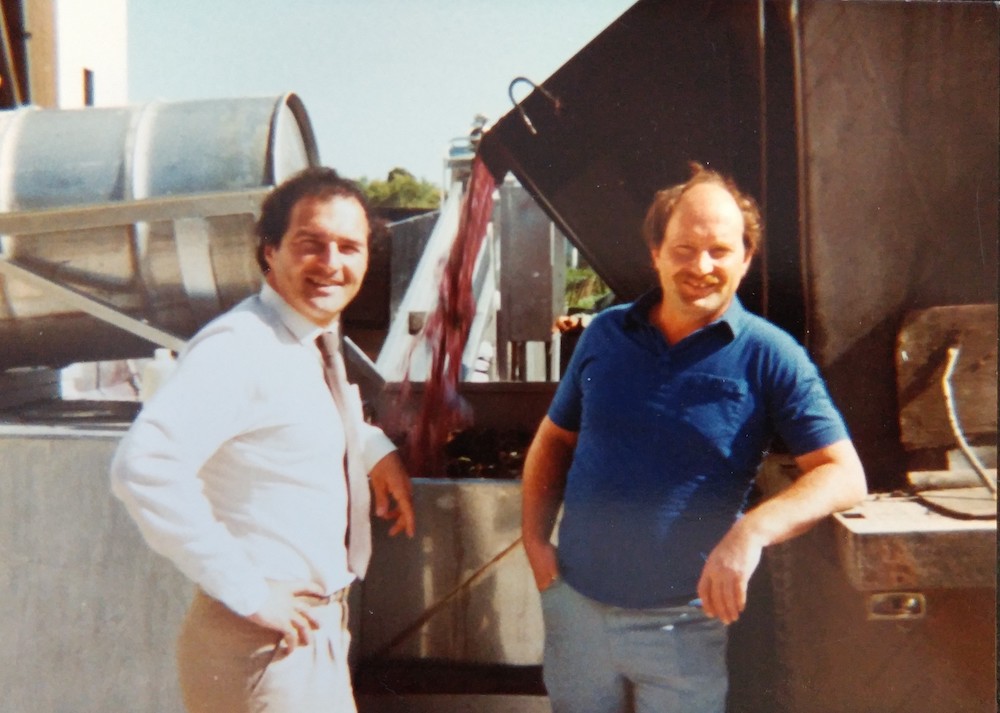
It’s simply perplexing to me that Riesling is in a bit of funk right now. As one of the Big Five varieties that historically define the Ontario wine landscape, which also includes Chardonnay, Cabernet Franc, Pinot Noir, and Gamay Noir, Riesling was one of the three vinifera grapes, along with Chardonnay and Gamay, that Donald Ziraldo and Karl Kaiser (above) planted in 1973, two years before the Inniskillin founders were granted the first winery licence since 1929 from General George Kitching, then head of the LCBO. It was the beginning of the modern wine industry in Ontario, and Riesling was right in the thick of it.
But at this very moment, Ontario Riesling is in serious danger of being downsized with growers and estate wineries rethinking their plantings in light of declining consumer interest. A surprising over-supply of grapes in 2023 saw growers dropping unsold fruit to the ground this past fall with Riesling leading the charge. Some growers I’ve spoken to are considering ripping up their Riesling vines in favour of other varieties as the industry reacts to changing consumer trends. Wineries, too, are reconsidering at least part of their Riesling plantings as the market faces a sea of languishing supply, and discounted pricing.
There will always be a place for Riesling in Niagara and Ontario, but it sure looks like it will have a smaller footprint going forward if things don’t turn around quickly.
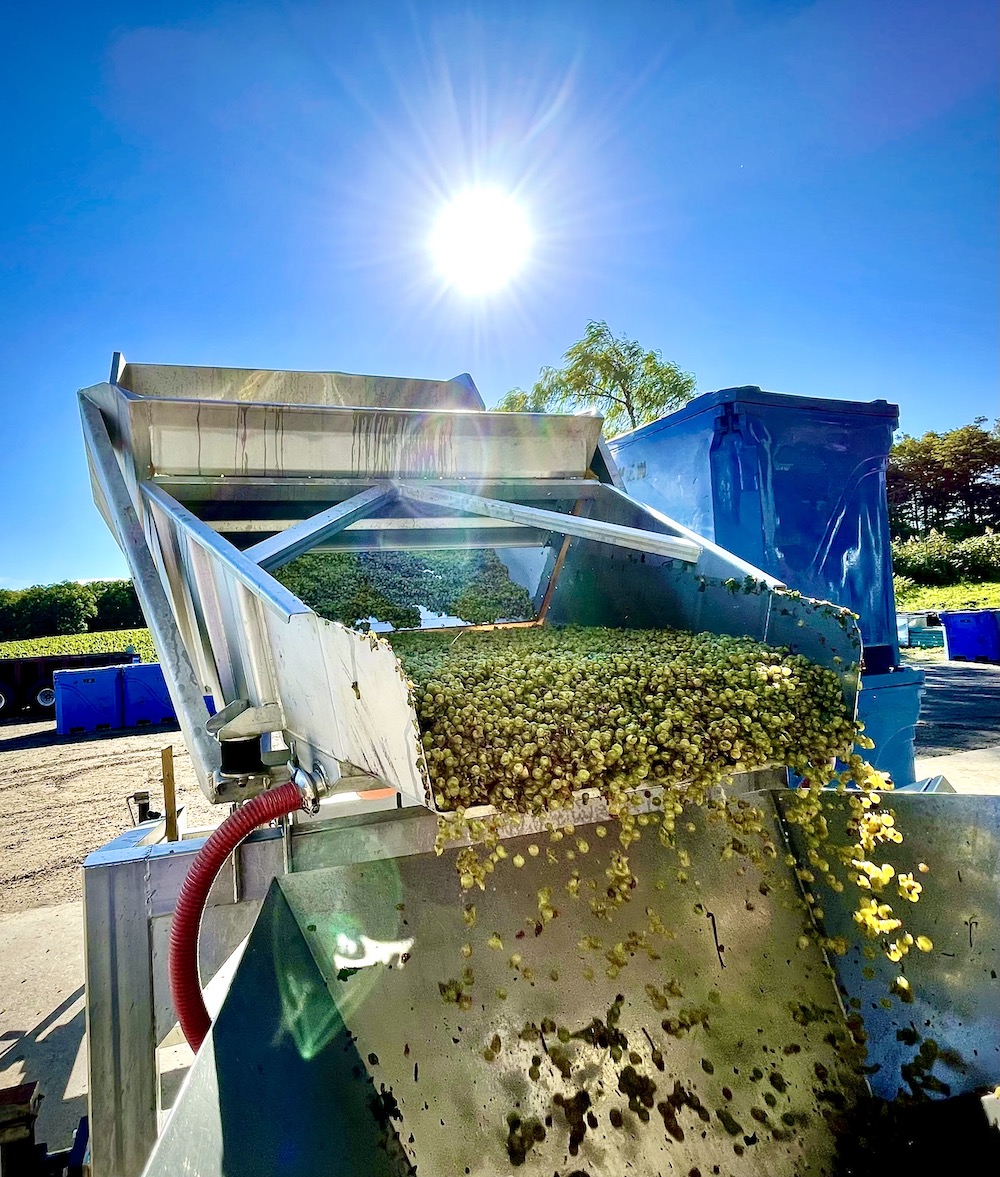
“Riesling is certainly a shapeshifter and I suspect consumers may have a lack of confidence when making a first-time buying decision,” Vineland Estates winemaker Brian Schmidt told me last year. “Riesling can take on many different personalities, regional styles, growing decisions, winemaking styles.” He also added that Riesling will significantly change and evolve in the bottle as it ages. “Our experience in the tasting room would demonstrate there are two distinct buyers of Riesling,” Schmidt added. “Older, more established drinkers gravitate to drier Riesling with more traditional aromatics (savory, honeycomb, touches of petroleum). Younger consumers are more interested in enjoying Riesling when youthful, fresh (fruitier/sweeter) … those last two descriptors can sometimes be conflated.”
He said that as a winemaker, it’s difficult to “be all things to all people. Once a consumer finds a Riesling that suits their palate, they generally stick with that wine brand. Only a small percentage of consumers are curious to explore other examples.”
We are at a crossroads. I want to further explore the reasons why Riesling has waned in popularity by talking to those who make it, grow it and those who do and don’t drink it in the coming months. I want suggestions of what they think is great Riesling, what they are looking for and/or why they don’t reach for Niagara Riesling when shopping for wine anymore. But, right now, I want to talk about an aged Niagara Riesling that shocked me when I tasted it two weeks ago. It reminded me of why I love this variety so much and why I keep harping on its latest predicament.

Charles Baker, above, is one of the founding directors at Stratus Vineyards in Niagara-on-the-Lake. He fell in love with Riesling as a cellar hand in the 1990s. Baker has made it his mission to explore the nuances of Riesling from various sites in Niagara since then. Riesling is all Baker makes under his own label sold at Stratus and was, as far back as I can remember when tasting his wines in his backyard in Jordan in the early aughts, an exciting unique style that focused on key vineyards that best expressed this fascinating grape.
Baker was the first and, at the time, the only vintner in Niagara making Riesling exclusively. It is his love and it his belief that Riesling can rise above the more populist styles, that are often too soft, too sweet (as in unbalanced), and too simple.
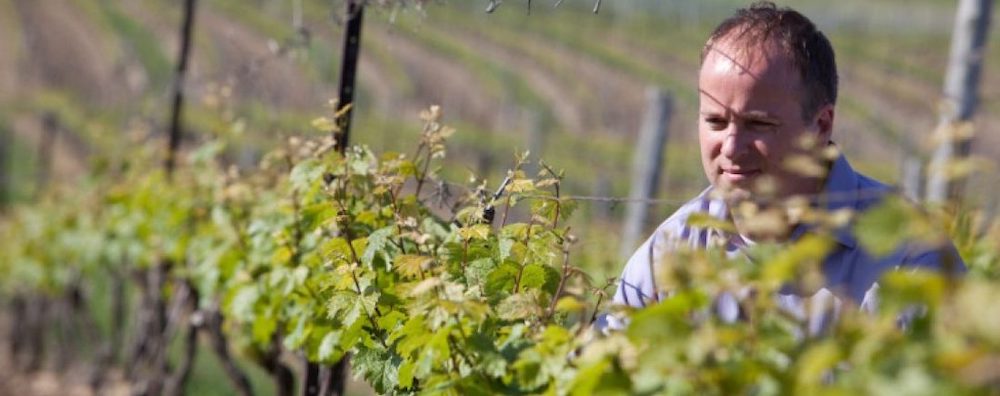
That is not to say he was the only one who thought that way. Cave Spring has always been all-in with its focus on Riesling and its signature single-vineyard expression simply called CSV. Vineland Estates has long produced quality Riesling from vines planted in 1976, brought to Canada by Herman Weis, a nurseryman in Germany’s Mosel Valley. The historic St. Urban Vineyard continues to make some of Niagara’s best expressions of Riesling. And there are others; Konzelmann, Henry of Pelham, Thirty Bench, Southbrook, and Chateau des Charmes, to name but a few. Others have followed; Hidden Bench with its single vineyard expressions, 2027 Cellars sources key Riesling vineyards, Ravine with a lovely botrytised expression from its unique estate vineyard site, Bella Terra, Flat Rock Cellars from the iconic Nadja’s Vineyard, Fielding Estate, Featherstone, Leaning Post, Westcott, and newcomers such as Dobbin, named Wines in Niagara top white wine of the year, Liebling, King and Vic and the virtual winery Horseshoe Cellars, which only produces Riesling. There are plenty of others, and I have a list of 16 Riesling reviews, with scores 90-plus, that caught my attention in 2023 below.
The Charles Baker Riesling that absolutely blew my mind recently was a treasure from my modest cellar, the Picone Vineyard Riesling 2009, opened at a BYOW lunch with friends at the Twisted Pig in Port Dalhousie over the holidays. You just don’t know what to expect from a 15-year-old white wine from Niagara no matter how it was stored, but that cooler vintage, though not kind to the Bordeaux red varieties, favoured Chardonnay, Pinot Noir and, yes, Riesling.
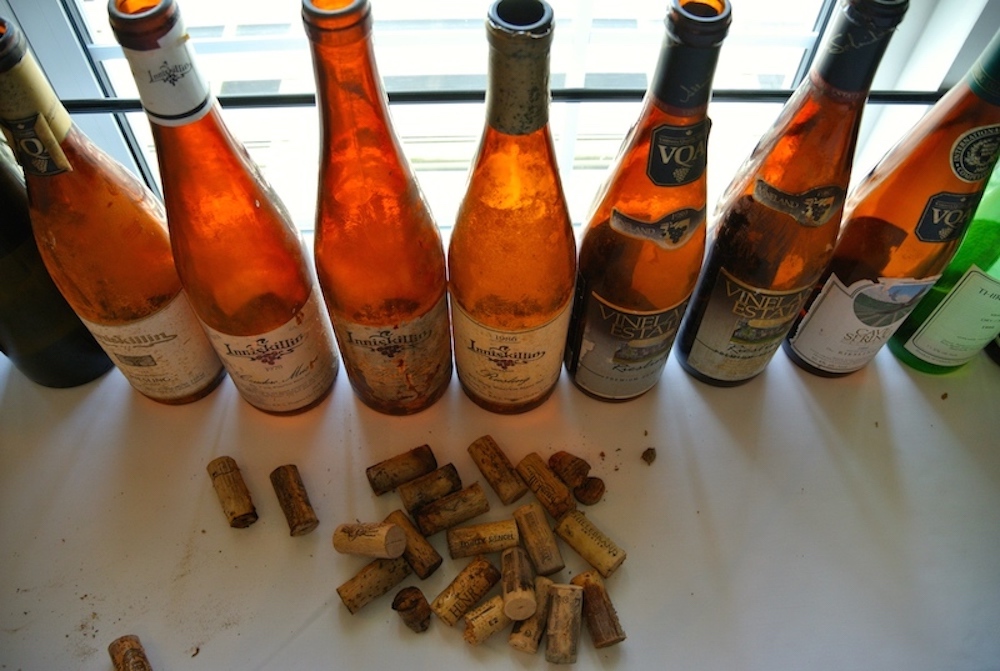
I can remember writing about Baker’s 2009 Riesling when it was arriving to Vintages stores for the first time in 2011. He already had at least one Riesling in his portfolio from the Picone Vineyard in the Vinemount Ridge sub-appellation every year beginning in 2005, with a tiny cult following. The 2009 vintage was his coming out party of sorts after developing a close association with vineyard owner Mark Picone, who owns just two blocks of Riesling in the sub-appellation, which goes exclusively to Baker. By 2010, Baker added a second CB Riesling to his portfolio, from the Ivan Vineyard, located in Vineland (just south of Tawse) in the Twenty Mile Bench appellation, and owned by Bob Nedelko. B-side Rieslings, canned Rieslings and a sparkling Riesling have since been added to the lineup.
When I sat down with Baker in 2011, in his shady backyard on blistering hot day, to taste the new Ivan Vineyard and to retaste the 2009 Picone Vineyard Rieslings, I had no idea of what that the future of the Picone would hold 12 years down the road.
My original review is here:
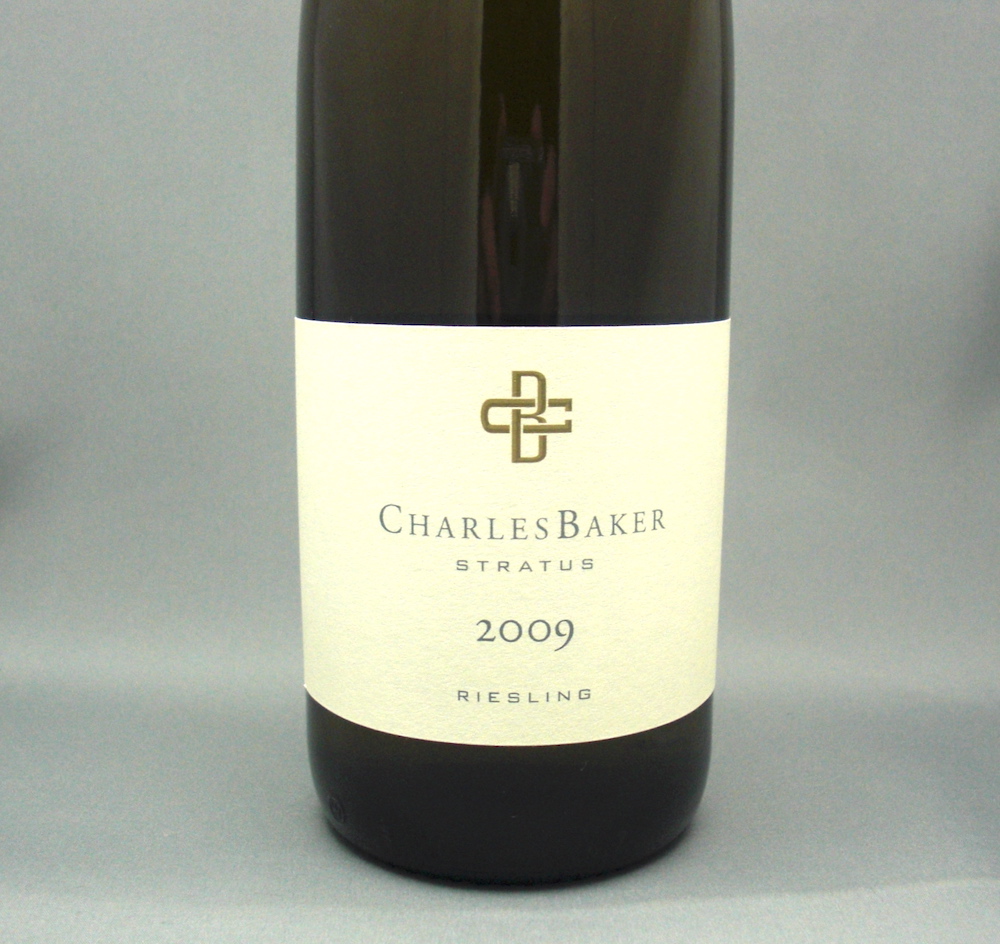
Charles Baker Picone Vineyard Riesling 2009 ($35, 92 points) — A truly remarkable and unique expression of the Vinemount Ridge sub-appellation. It has a juicy core of highly extracted fruit on the nose with an underlying vein of minerality, earth and just a hint of petrol starting to emerge. It’s fleshy yet vibrant with a wonderful tug-of-war going on between sweet and tart fruit on the palate. It has layers of citrus fruits, quince, and riverbed minerality that will reward with many more years in the cellar. Buy and hold for five years and even more.
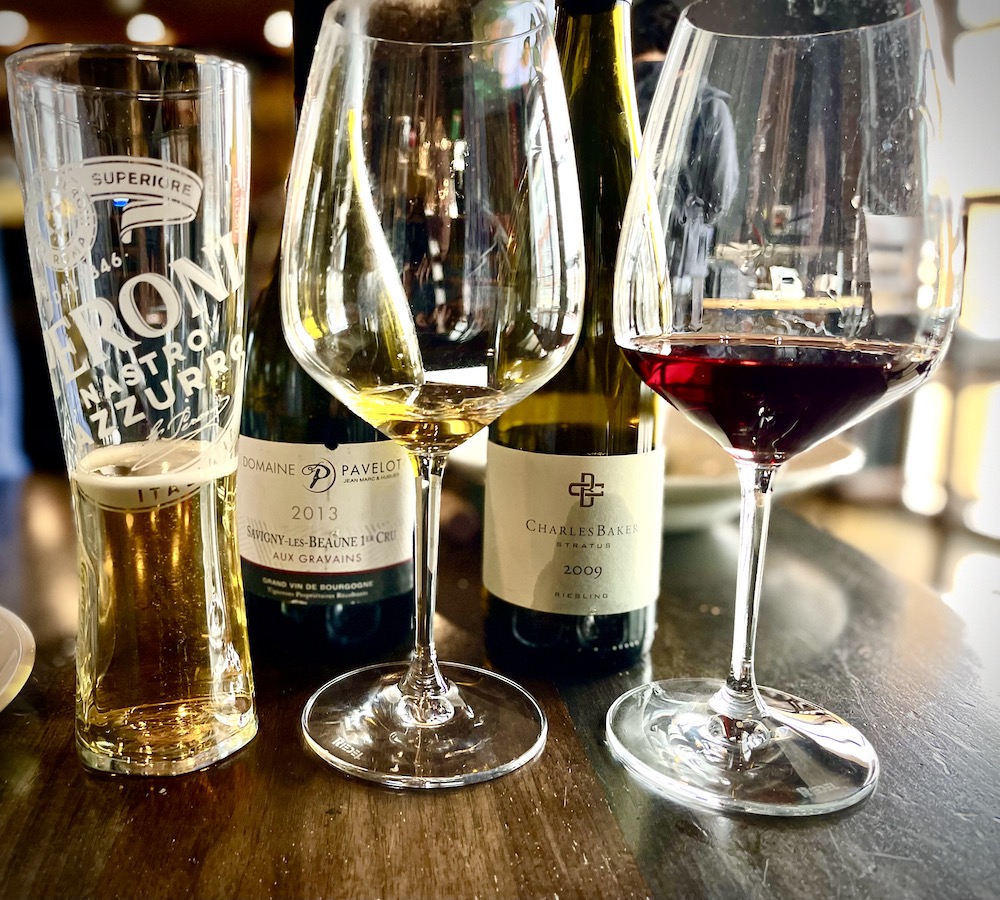
When I poured this exact wine into our glasses at the Twisted Pig with wine friends, it poured a rich golden colour in the glass and the profound aromas immediately leaped from the glass. The sweet petrol notes were on full display, the fruit was elevated and taking on a compoted note with added dried apricot, canned peach, citrus marmalade, and such intriguing, hard-to-define minerality. The palate was rich and intriguing with an unctuous, creamy texture, and all that fully evolved fruit melding as one. I couldn’t get over the petrol, subtle flinty/oxidative notes, toast, white pepper, and wild honey on the still vibrant finish. It was truly a marvel, and a reminder of how fascinating Niagara is both in its youth and as it gracefully matures. I paired it with the Twisted Pig gnocchi gorgonzola, with house-made potato gnocchi, gorgonzola cream sauce and Rosewood Estates Winery wildflower honey. It was a pairing straight from heaven!
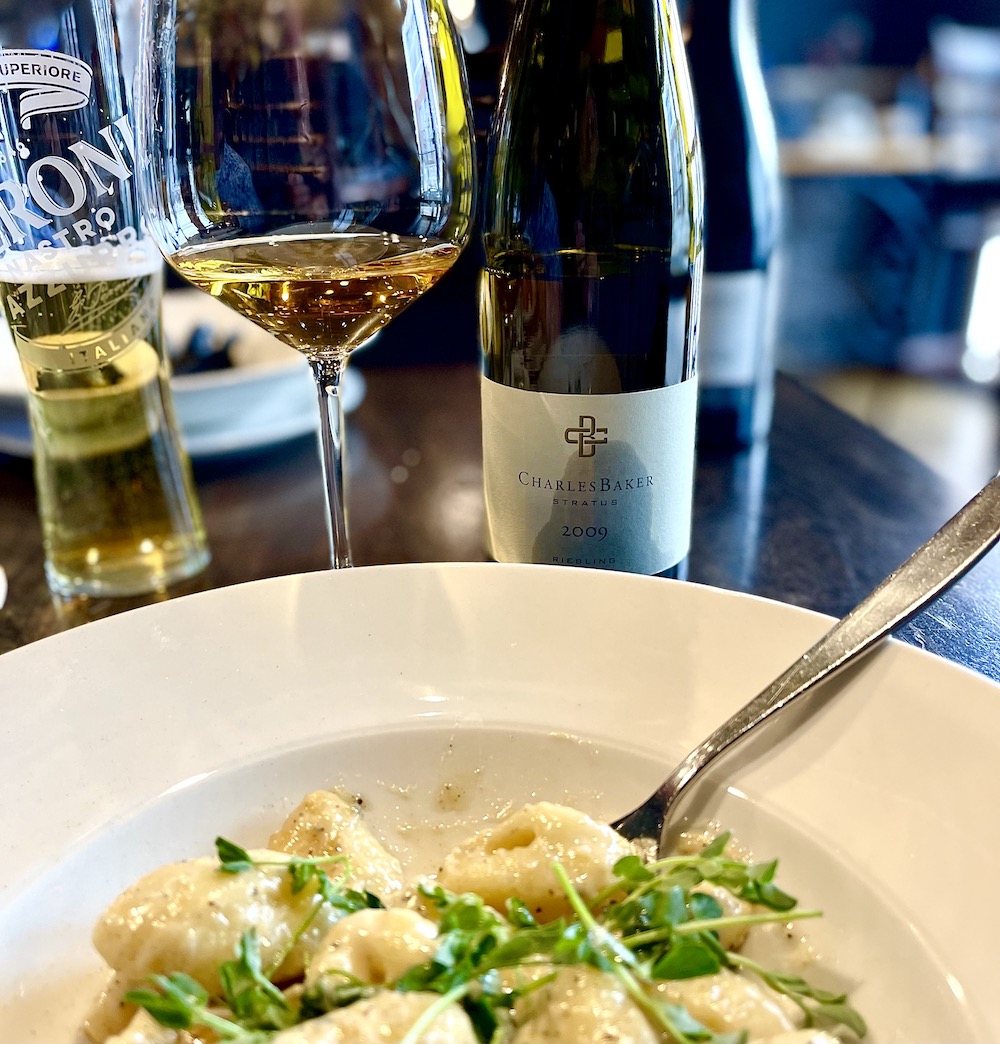
I was so smitten that I couldn’t wait to get to Stratus to taste the current vintage of the Picone Vineyard Riesling and also taste a surprise (to me), of a traditionally made Riesling sparkling wine from Baker. Here is what I liked:
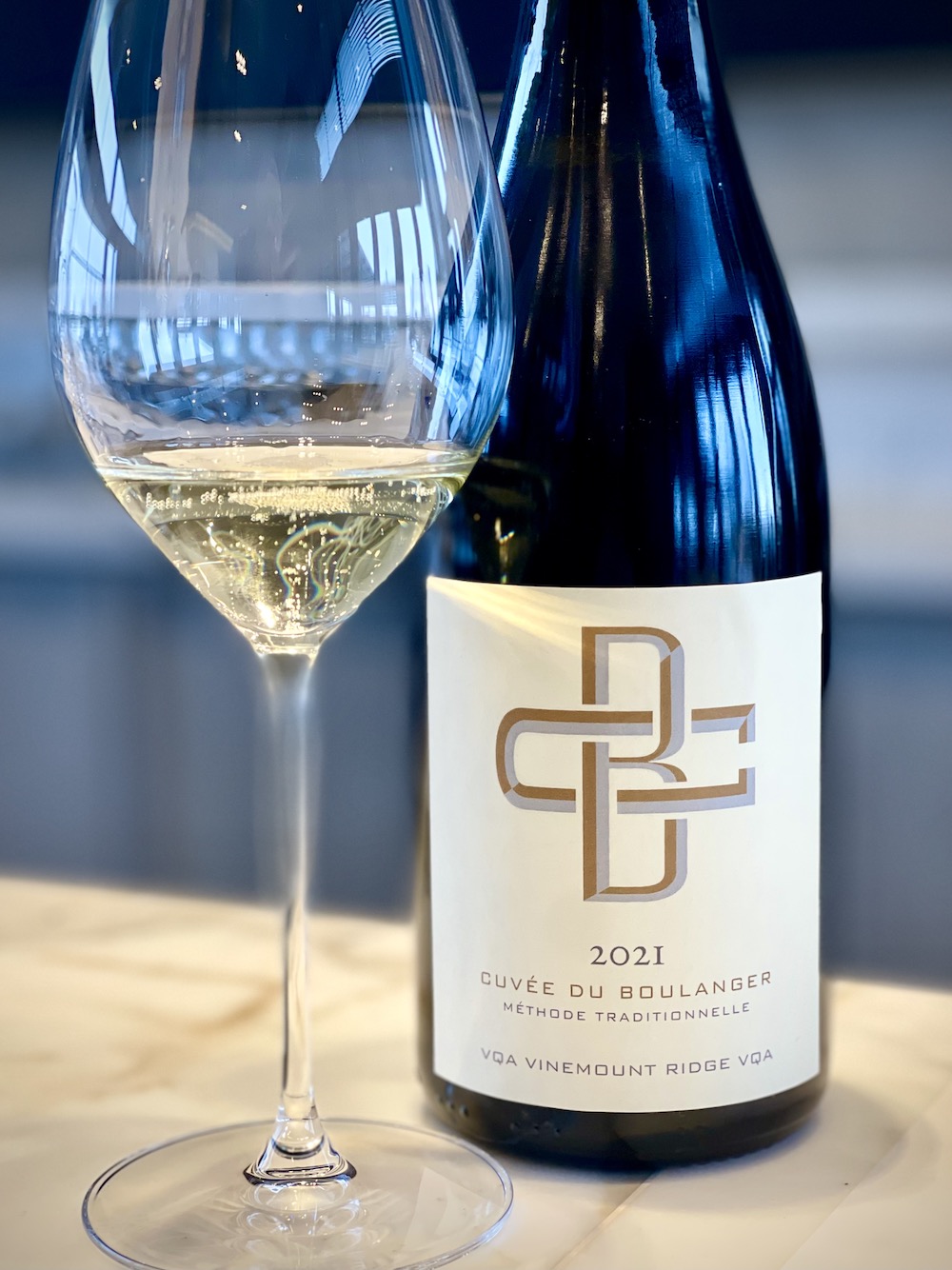
Charles Baker Cuveé de Boulanger 2021 ($45, 93 points) — This 100% Riesling, sourced from the Picone Vineyard, is a méthode traditionnelle made sparkling wine that spends a year on its lees. This is Baker having a bit of fun, not only with the name Boulanger (baker) but also with the wine, a sparkling version of his top Riesling cuveé from his favourite vineyard. It has a lifted, floral nose of fresh peaches, bright apple, lemon and lime zest, subtle creamy/leesy/toasty notes, and a persistent bead in the glass. It’s creamy but maintains its brightness with a vigorous bead, touches of orchard and citrus fruits and a clean, energetic, fresh finish. This is an ode to joy and a fun expression of one winemaker’s singular love for Riesling.
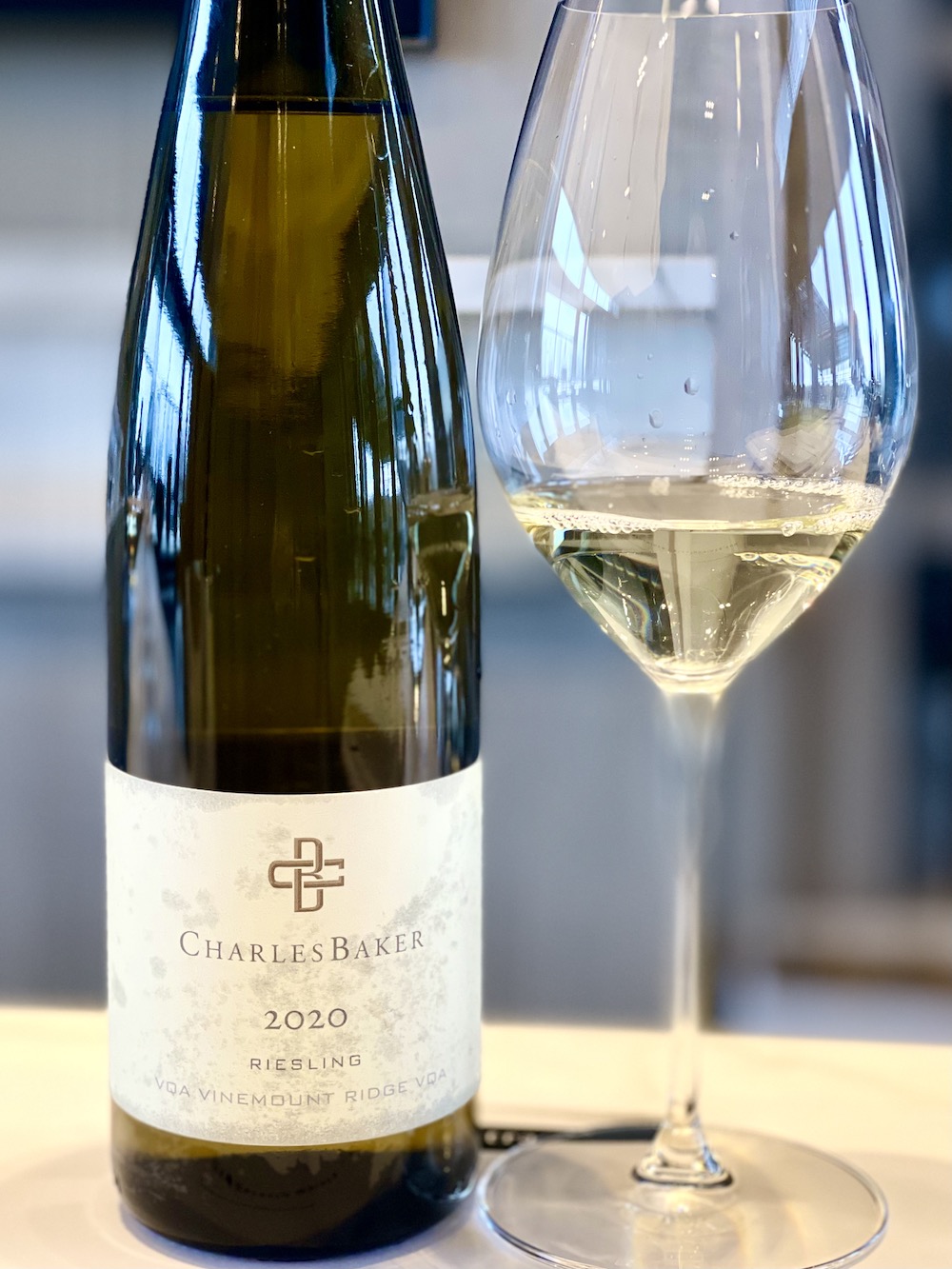
Charles Baker Riesling Vinemount Ridge 2020 ($45, 94 points) — There’s a reason the Institute of Masters of Wine chose the Charles Baker 2019 Riesling Vinemount Ridge as one of 12 blind wines in the 2022-23 stage one MW exam. The MW annual wine exam is arguably the most difficult and respected wine exam in the world. Inclusion of this wine is a recognition that highlights the exceptional quality and character of Ontario VQA Riesling, but also reinforces its status as a world-class example in the global wine industry. Said Baker on the honour granted to his wine: “My pursuit of Riesling began as a sommelier and subsequently as a cellar hand in Jordan, Ontario. When I was part of the opening team at Stratus, I was already deeply committed to exploring the various sites of the Niagara Peninsula in pursuit of capturing its various personalities,” he said. “The Vinemount Ridge expression of this project has often been lauded as a stand-out Riesling, but to have it included as one of the first Ontario table wines at the Master of Wine exam is the ultimate honour. Expressions of Terroir include the people stewarding the land and as such, my endless thanks go to our growers, J-L Groux, Dean Stoyka and the entire team at Stratus for being part of this journey.”
The warm 2020 vintage encouraged a much richer expression of the Picone Vineyard Riesling than the cooler 2009 version noted above. It’s loud on the nose with a range of stony/flinty minerality, emerging petrol, poached pear, ginger, ripe apple, quince, and lemon curd. It’s highly extracted on the palate with honey and sweet petrol, flint and stones, pear, lime, apricot, lemon, lovely texture, and ginger spice with a lifted and somewhat fresh vein of acidity keeping it vibrant and fresh through a long and luxurious finish. It is an outlier to most other vintages in Niagara for Riesling, but Baker and his winemakers from Stratus have created a beautifully expressive wine that is layered and succulent with enough finesse to age beautifully for 10 or so years. Hard to wait on it, though, as it’s really rocking right now.
16 Niagara Rieslings to buy now
In no particular order, we offer 16 Rieslings tasted in 2023 that scored 90 points or higher by Wines in Niagara. They run the gamut of price points and styles and show the diversity of this incredible variety.
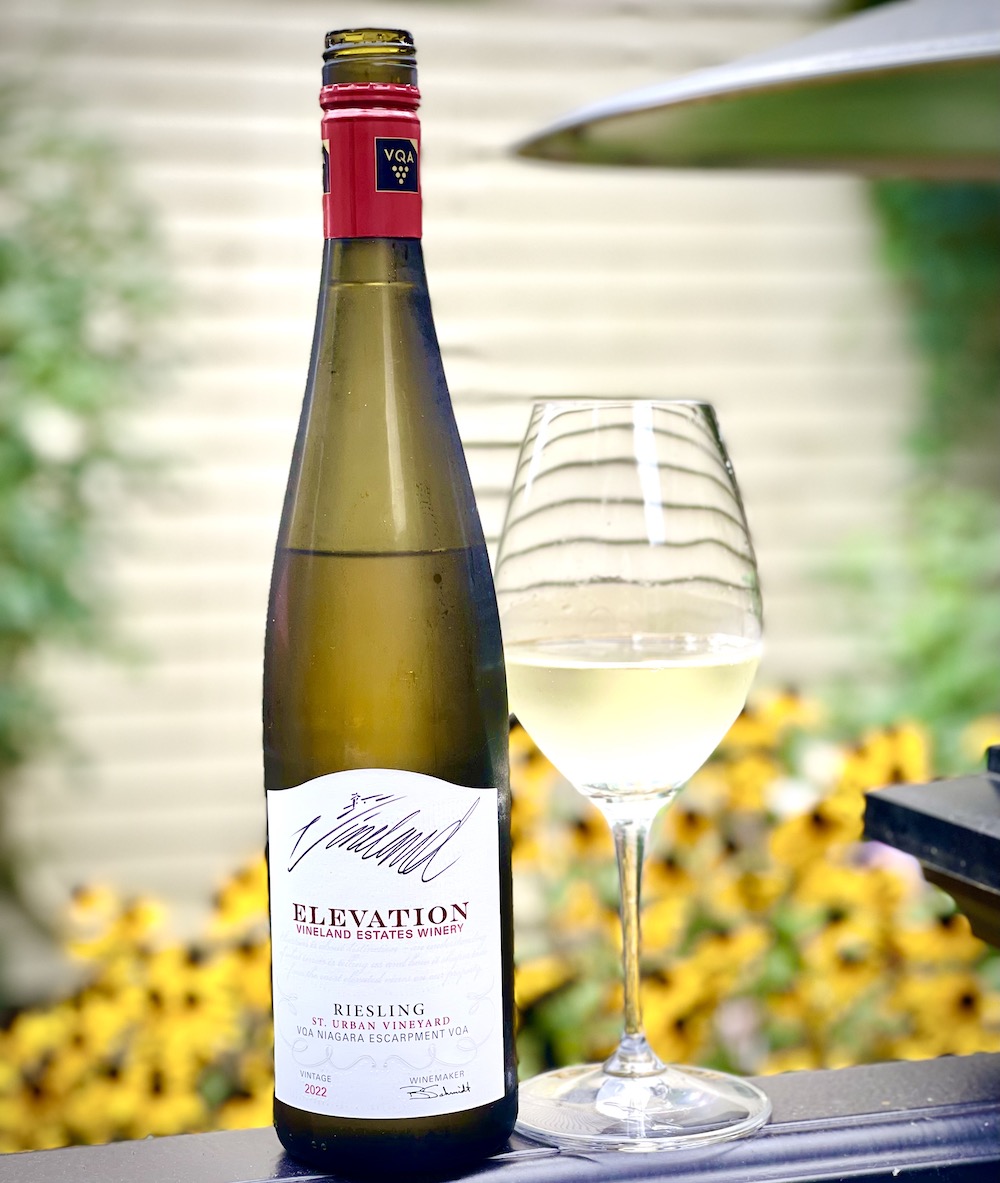
Vineland Estate Elevation St. Urban Vineyard Riesling 2022 ($23, 93 points) — The historic St. Urban Vineyard was planted in 1979 and has consistently made some of most minerally-specific Rieslings in the country. Winemaker Brian Schmidt used St. Urban Vineyard Field D for this wine. The Elevation Riesling is now the top seller at Twenty Mile Bench winery, surpassing only recently the Semi-Dry Riesling. The Elevation Riesling is finished with 28 g/l of RS. This follows closely to previous versions with a pretty and profound nose of fresh-squeezed lime, wet stones and saline minerality, green apple, apricots, lemon blossoms, and pear. It has lovely texture on the palate with intensity and verve to go with a mélange of lime/citrus, ripe pear, a hint of honey, subtle peach notes, stony minerality, ginger and electric acidity driving the back end and keeping everything in balance. These Elevation Rieslings have a sound history of aging beautifully for 10 years plus. Great value from a top-notch Niagara Riesling from the Twenty Mile Bench. Load up!
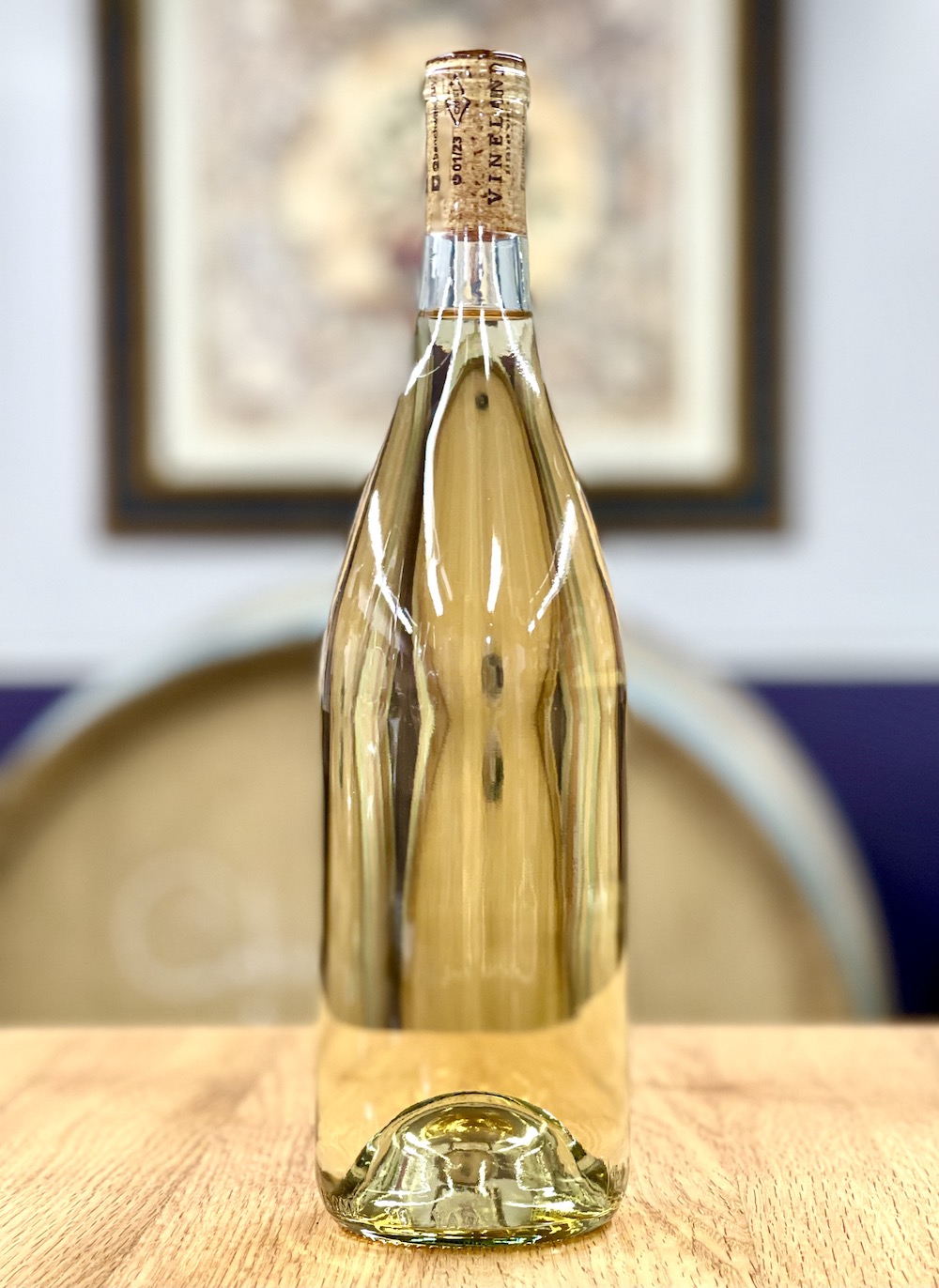
Vineland Estates Rocket Riesling 2022 ($25, wine club only, 93 points) — This is a one-of-a-kind, out-of-this world Riesling, made from the same vineyard and block as the iconic St. Urban Elevation Riesling above but with a BIG difference. It’s an experimental wine from a single yeast cell grown in the absence of the sun’s radiation and raised in zero gravity three kilometres underground in the SNOLAB, a world-class science facility located in the operational Vale Creighton nickel mine in Sudbury (a sister sample was sent to NASA and launched into deep space on a rocket ship to compare with the zero-gravity sample Vineland got). Vineland’s sample was put into a 600 L tank wrapped in a space blanket deep in the cellars at Vineland Estates. Schmidt wanted to ferment the Rocket Riesling to complete dryness, which added time to the project. The result is a much deeper shade of gold in the glass and has radically different attributes in the glass compared to the Elevation wine from the same vintage. Are the differences because of yeast? Or is it the long fermentation? Very hard to ascertain and hopefully the scientists have enough data from Schmidt to make a call at least on the science behind that. The nose is profoundly minerally driven with notes of white flowers, lemon oil, crisp apple, peach, and lime cordial. On the palate it is rich, ripe, and layered with fleshy peach, apricot, and lime/citrus with stony minerality, lanolin, and a zesty, lifted finish. This was one of 10 Most Thrilling White Wines of 2023 as named by Wines in Niagara.
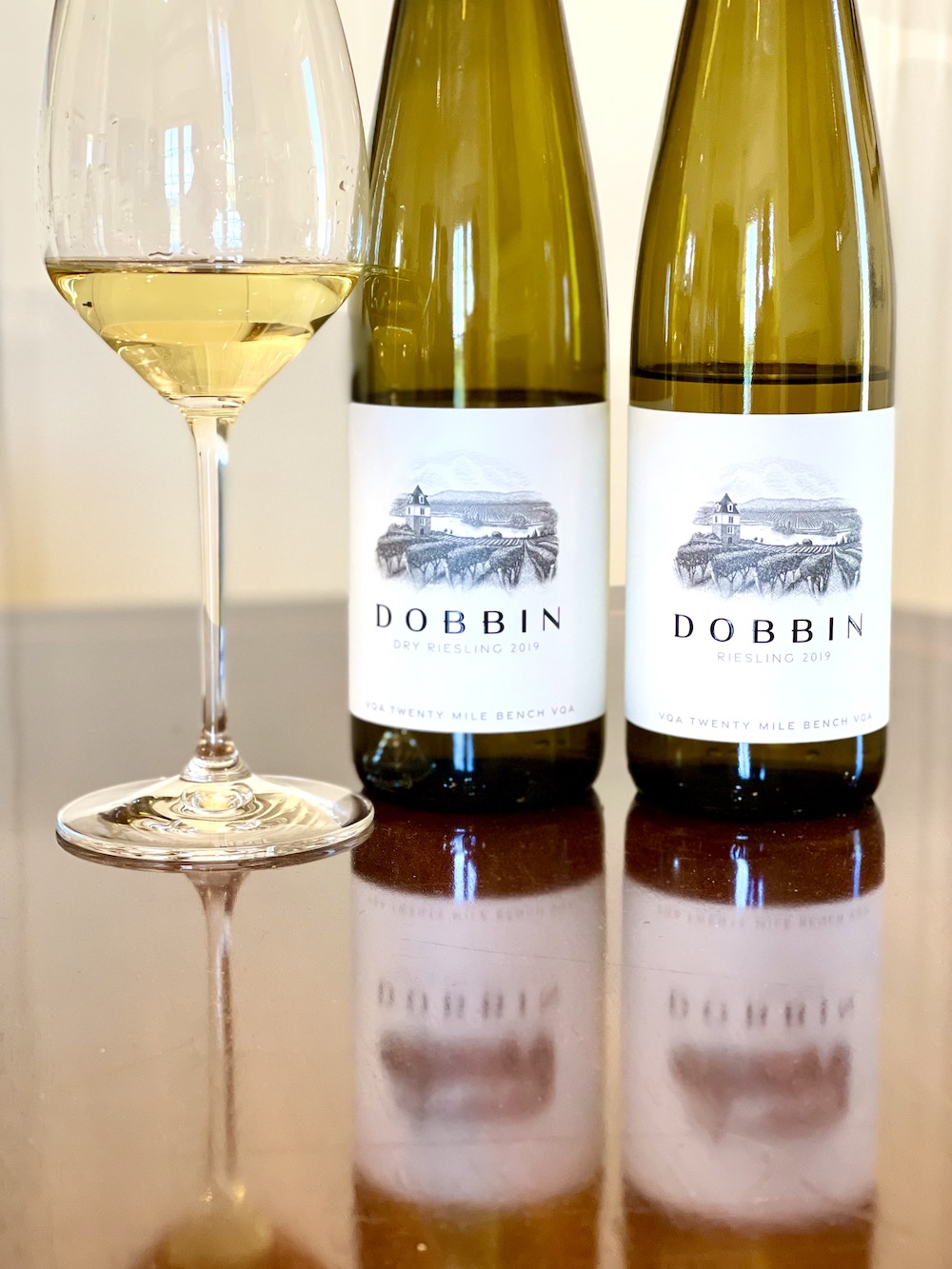
Dobbin Riesling 2019 ($65, 95 points) — This shows the kind of serious style of Riesling Peter Gamble and Ann Sperling are zeroing in on from estate vineyards, in this case, the small Charlene Vineyard on the western part of the property nestled in the heart of the Twenty Mile Bench. It’s the result of several different pick dates and collecting portions of botrytis affected grapes (20%) during the harvest for separate vinification in a mix of stainless steel and neutral larger format oak barrels. The RS is a modest 10.5 g/L, and 107 cases were made. This is incredibly complex and keeps changing on the nose and palate as you go back to it. Lemon-lime emerges on top then wild alfalfa honey, green apples, pears, fuzzy peach skin, and subtle apricots and stony minerality. It has a fine mineral edge on the palate with flint and lanolin followed by fresh apples, peach tart, zesty lemon-lime, a hint of wild honey (not sweet) and a racy, lingering, electric finish that will keep this delightfully complex Riesling in fine form for a decade or more. This was named the Most Thrilling White Wine of the year by Wines in Niagara.
Dobbin Dry Riesling 2019 ($60, 93 points) — The grapes were manually harvested in several different passes over a period of nearly a month to provide some additional complexity through the varied acidities, ripeness, and flavour profiles of the grapes. There were short portions of skin-time and extended fermentations in primarily stainless-steel barrels. About 12% of the fruit was botrytised. This “Dry” Riesling is noted only by its black capsule in a throwback to the winemaking in Alsace, which influenced the motivation behind this wine. It has under 8 g/L of residual sugar and only 176 cases were produced. This is a very different style of Riesling for Niagara. It’s racy and open knit on the nose and starts with a pure mineral bath of saline, chalky notes and emerging petrol followed by lime, quince, white flowers, and subtle savoury notes. Wonderful concentration on the palate showing fleshy orchard fruits, zesty lime, saline, wet stones, and a long, vibrant finish. This suggests a long trip (8+ years) to the cellar if you want to push those contrasting petrol and mineral notes.
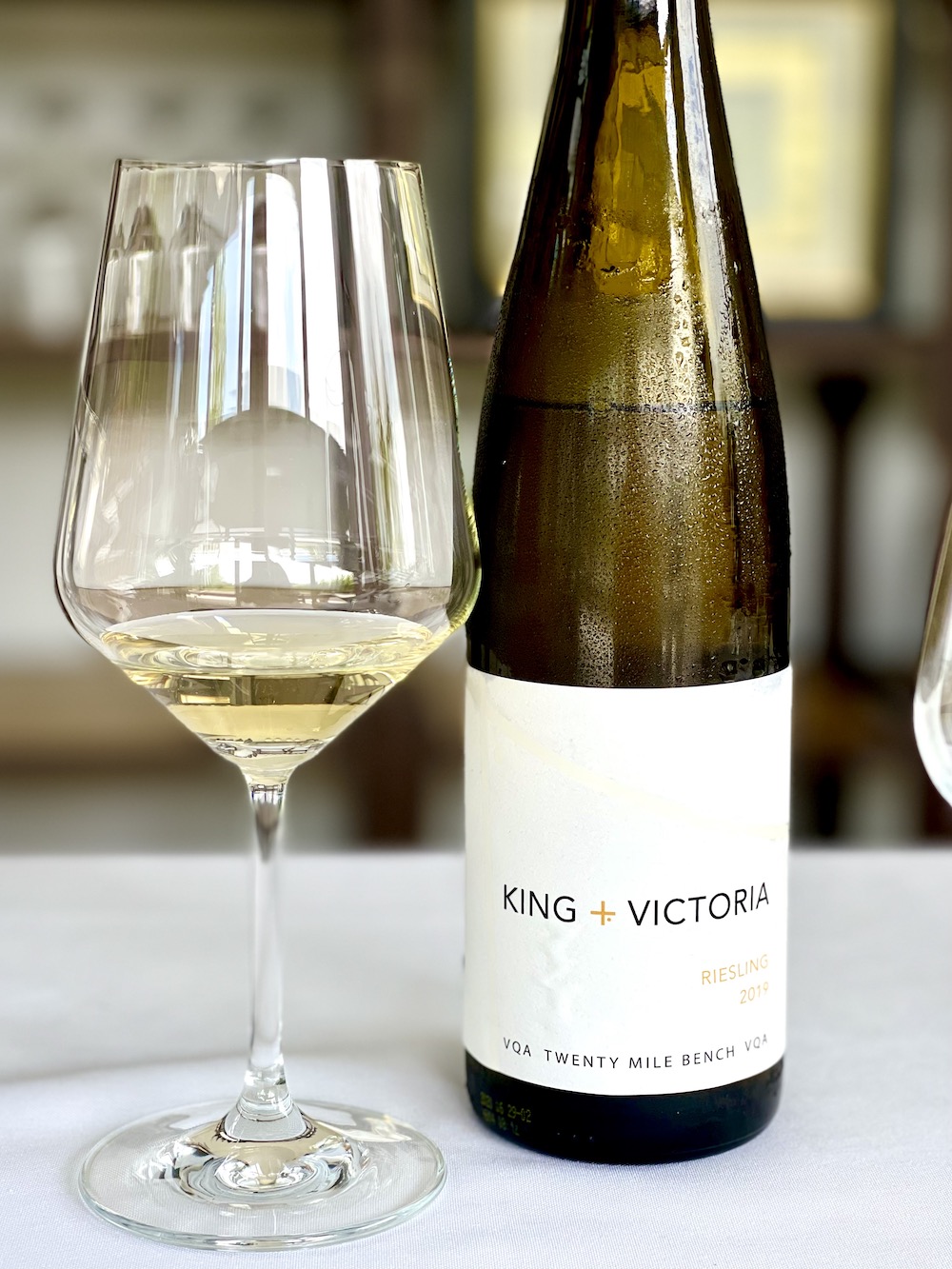
King and Victoria Riesling 2019 ($25, 92 points) — Made from 15-year-old vines grown in the home vineyard on the Twenty Mile Bench, this Riesling is classic Bench with a fresh, saline nose of lemon-lime, green apple, pear, and nectarine. It’s dry and fresh with stony minerality, some fleshy notes, citrus, ripe pear, subtle savoury notes, and a bright, lip-smacking-good finish. Can cellar 7+ years.
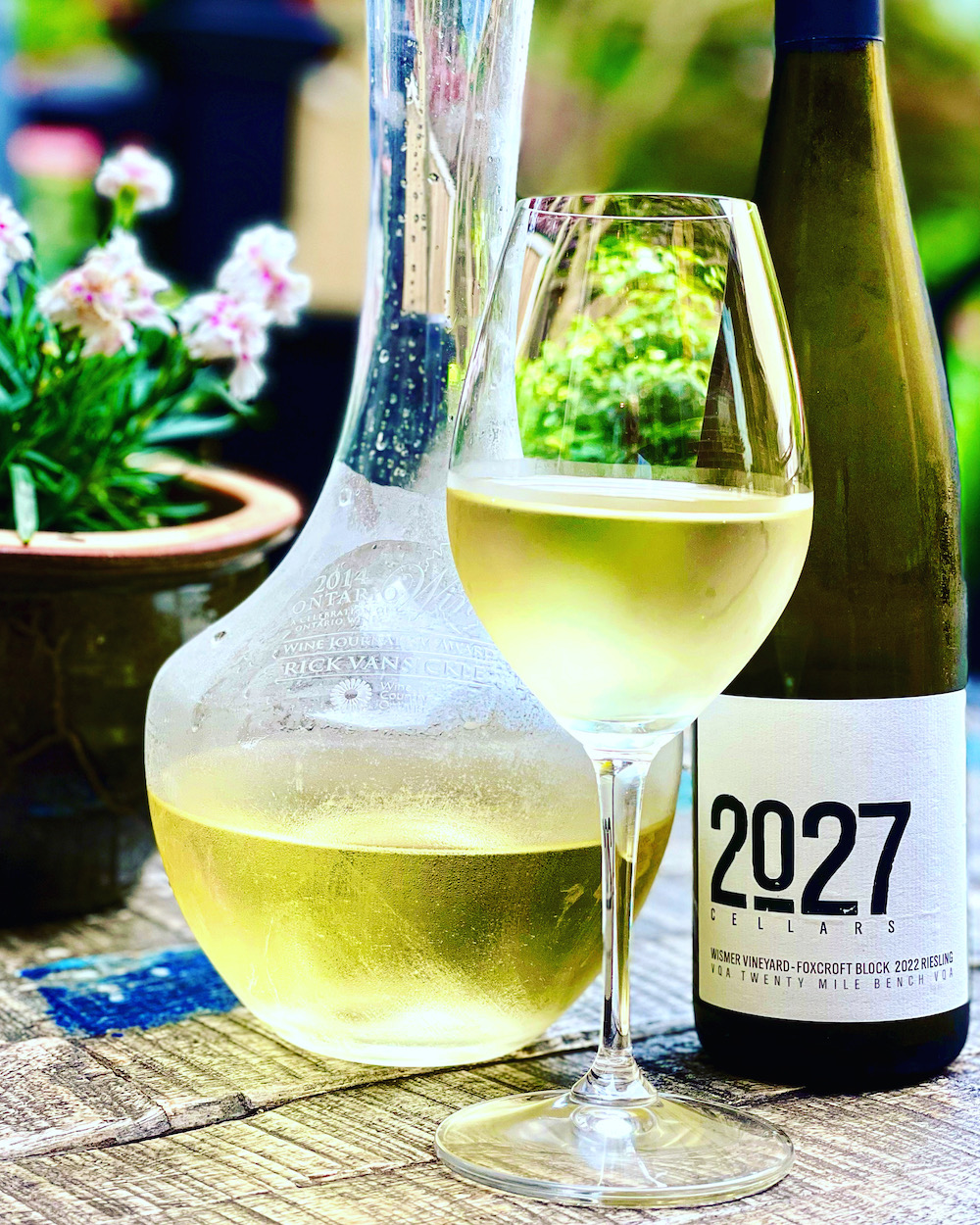
2027 Cellars Wismer Vineyard Foxcroft Block Riesling 2022 ($25, 93 points) — It has been a few years since 2027 owner/winemaker Kevin Panagapka dipped his toes in the Riesling pool, and he’s gone back to one of his favourite vineyards to get back in the game. Panagapka’s Rieslings were some of the first wines I tried from this then-virtual producer many years ago and the ones that made me think this brand would be special. He set it aside in favour of other varieties for a few years, but I’m certainly happy its back in the fold. Niagara Riesling, especially single-vineyard Bench expressions, can compete with the best in the world. It has a profoundly minerally/saline nose with grapefruit, lime, peach skin, green apples, and oodles of freshness wafting from the glass. Love the saline/oyster shells notes on the palate followed by lime, grapefruit, quince, savoury notes, and unsweetened wild honey in a crisp/fresh and zingy style that’s lifted through the finish. Note: I decanted the bottle I purchased for review as it had just been bottled, in case you are wondering why there is a decanter in the photo. No need to do that now.
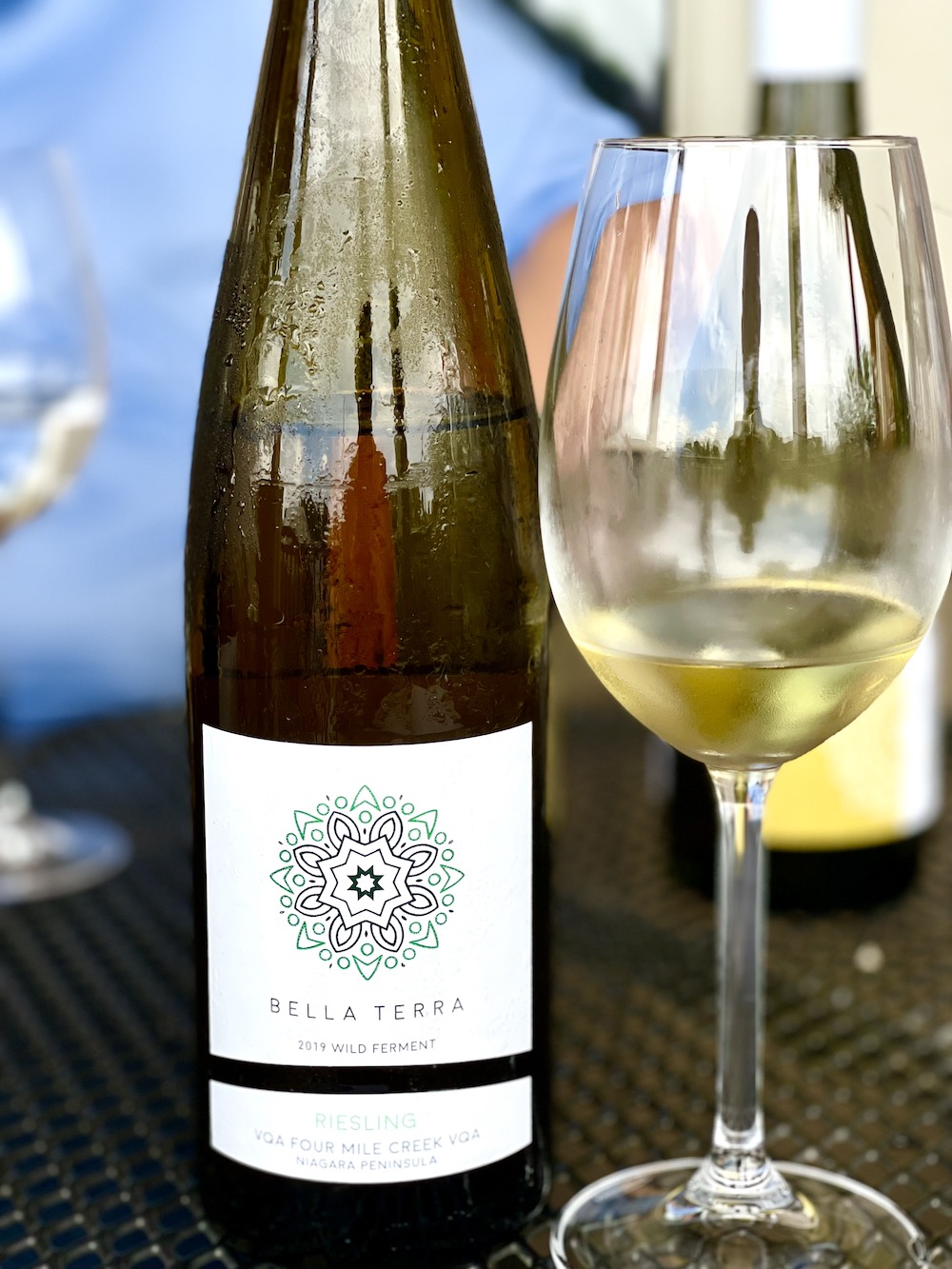
Bella Terra Wild Ferment Riesling 2019 ($25, 93 points) — This estate Riesling from the Bella Terra Vineyard is made in a bone-dry (less than 4 g/l of RS) style. Such an impressive nose of lime, apricot, peach, a touch of ginger, lemon oil, beeswax and hinting at petrol. It has lovely texture that shines a spotlight on the grapefruit/lime zest notes, apricots, green apples, ginger, and lovely savoury/petrol accents on a zippy, fresh finish. Enthralling Riesling that will age nicely over the next five years.
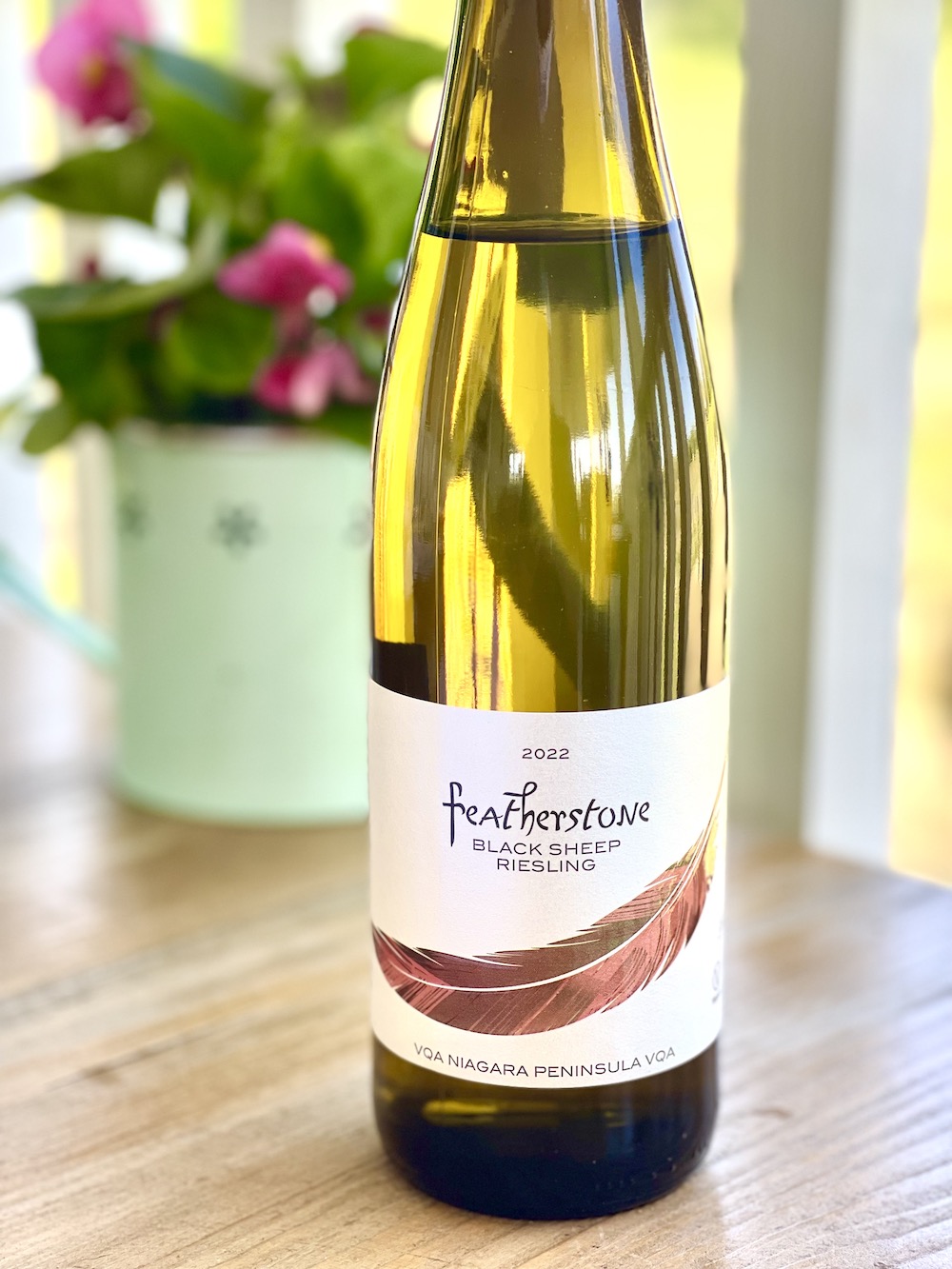
Featherstone Black Sheep Riesling 2022 ($20, 91 points) — Named after the sheep from St. Anns that Featherstone “employs” to help with leaf thinning in the vineyard later in the season. “It’s adult lemonade,” co-owner Louise Engel says. “It just tastes like another sip.” The grapes were hand harvested and whole berry pressed. It has enticing notes of lime, lemon, green apple, saline minerality, green apples and peach pit. There is some sweetness on the palate but tempered nicely by the racy acidity. It sings with bright lime/lemon, fresh apples, subtle flintiness, and a playful yin-yang of sweet-tart fruit with a fresh finish. Consistently delicious Riesling.
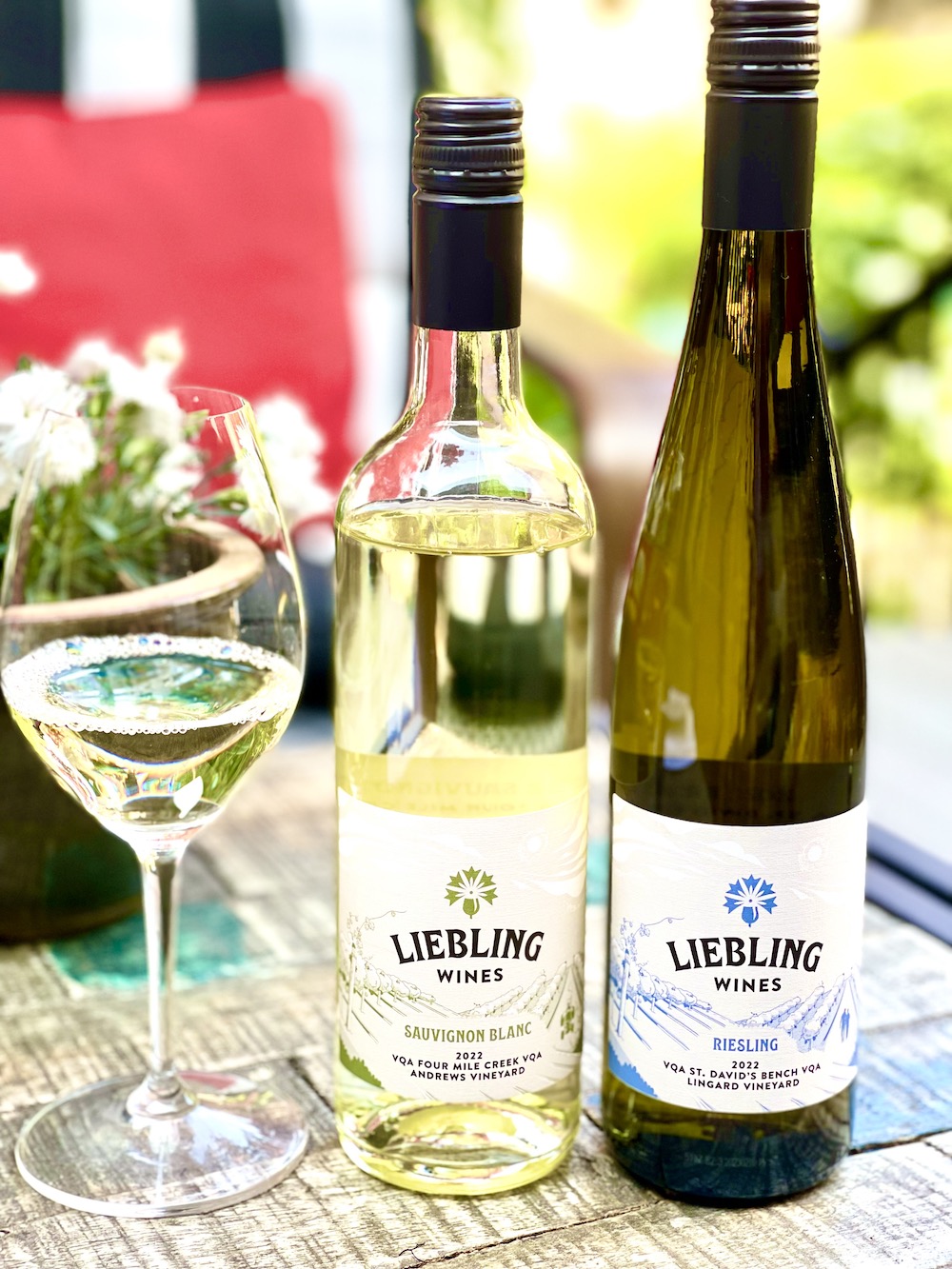
Liebling Riesling 2022 ($22, 90 points) — The flagship Riesling grapes from Liebling were born in the Lingard Vineyard on the St. David’s Bench from vines planted in 2006 by Matthias Oppenlaender’s vineyard team. Aging was in stainless steel and the grapes were planted to the 21b clone. The fresh nose shows a lovely melange of white peach, lime, candied citrus, pear, jasmine. and stony minerality. There is a subtle note of sweetness on the palate with a juicy array of peach, apple, citrus and wet stones that’s all nicely balanced by the racy acidity through the bright finish. A joyous Riesling for everyday sipping.
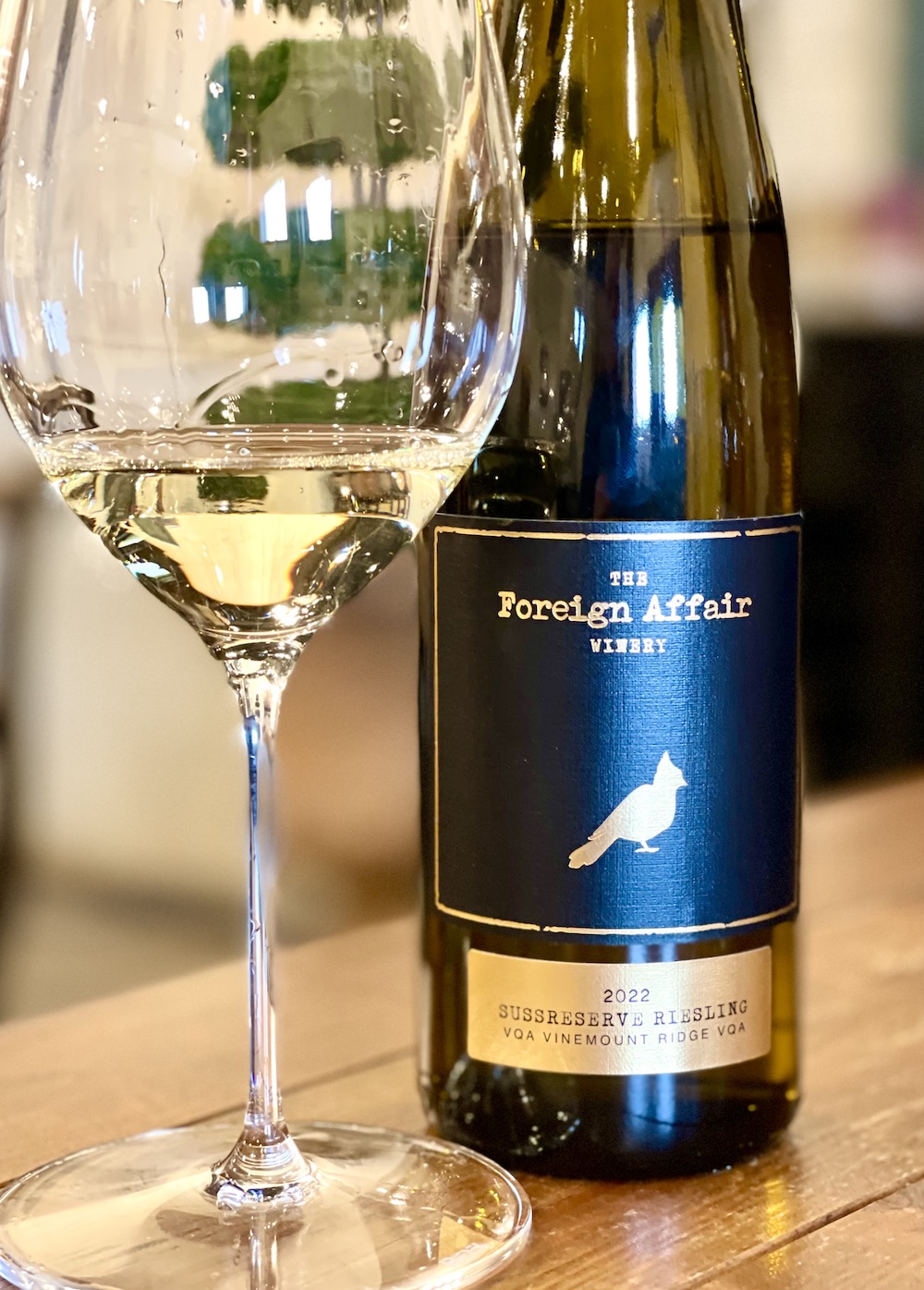
Foreign Affair Süssreserve Riesling 2022 ($25, 91 points) — Winemaker Rene Van Ede thought this Riesling was one white wine that might benefit from a bit appassimento grapes introduced to the Riesling, so 9% of dried Riesling grapes were blended in to “bring out more of those apricot notes to the wine,” he said. It has a ripe nose peach preserve, pronounced apricots, poached pear and lime cordial. It’s mouth-coating and vibrant with flavours of apricot, peach, some citrus/lime zest and nicely balanced on the finish. A very different take on Riesling that gets your full attention.
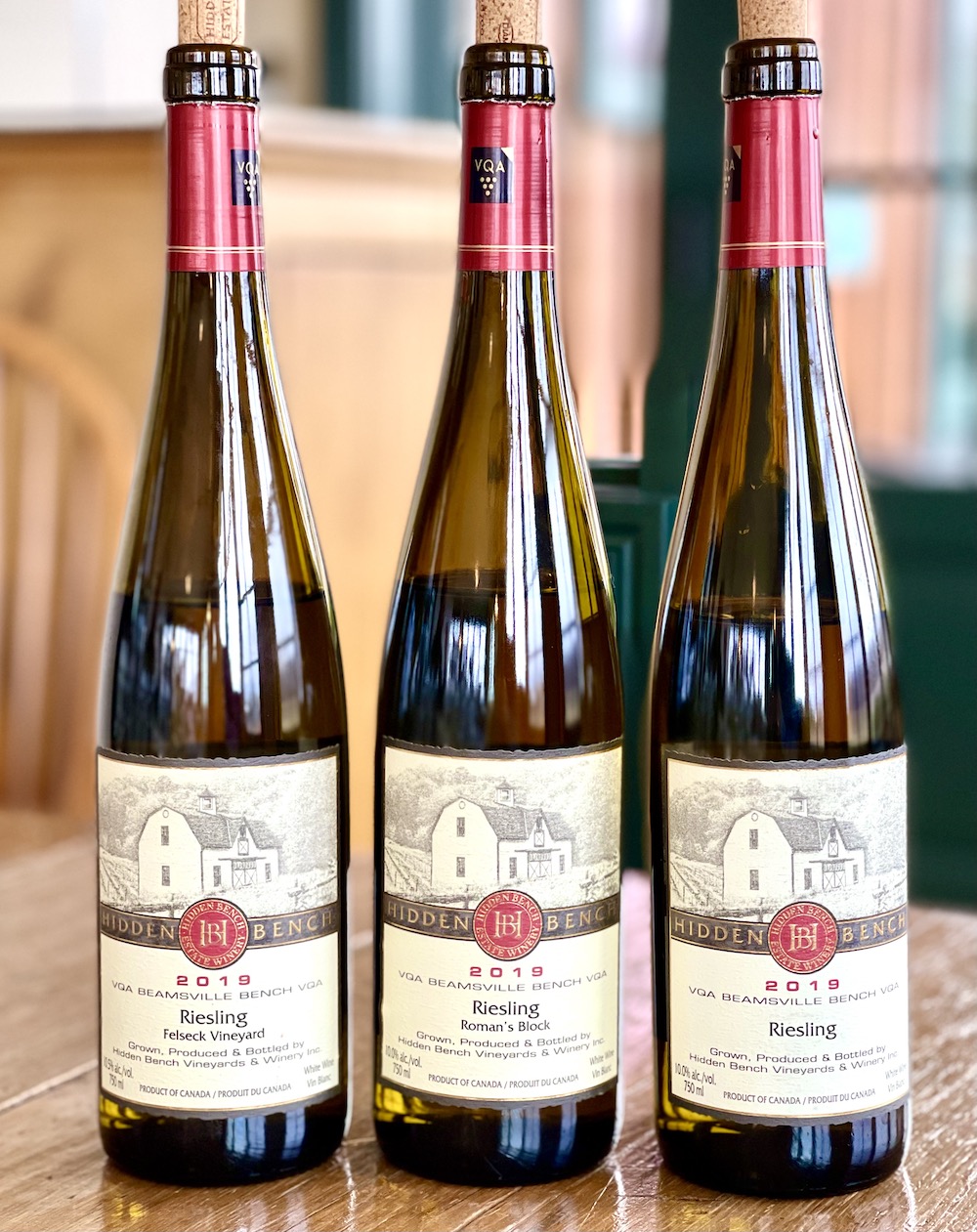
Hidden Bench Roman’s Block Rosomel Vineyard Riesling 2019 ($34, 94 points) — If single-vineyard Beamsville Bench Rieslings are your jam (and they should be), you might want to stock up on the 2019 and 2020 vintages. No single-vineyard Rieslings are being made from the 2021 vintage, owner Harald Thiel said, as the harvest wasn’t kind to this variety. The estate wine, however, will benefit from the de-classified top grapes. The vines in the famed Rosomel Vineyard are nearly 50 years old, and the older vines only yield about 2.5 tonnes/acre. The grapes are handpicked, sorted, and pressed as whole bunches. It has a delicate, elegant nose of honeysuckle, grapefruit, lime, and prevailing chalky/stony notes. It was a touch shy when first tasted but opened up to show a richer profile on the palate with ripe apple, gushing grapefruit and lime, stony minerality and a racy spine of acidity driving the backend and balancing modest sweetness on the long, lingering finish. You will be rewarded with 5+ years of cellaring.
Hidden Bench Felseck Vineyard Riesling 2019 ($30, 93 points) — The grapes for this single-vineyard Riesling are sourced from a small one-acre parcel on the southern-most point of the vineyard, planted in 1999. It has a lovely floral/mineral nose with fresh apple, lemon, lime wedge and oyster shells. This is loaded with vivid minerality notes followed by bright citrus, green apple, nectarine, and a subtle savoury note that all lead to a sizzling, refreshing finish where the acidity rounds out the 18.9 g/l of RS. This will benefit from some cellaring, say 4+ years.
Hidden Bench Estate Riesling 2019 ($25, 92 points) —The estate version of this Riesling is a blend of the three Hidden Bench vineyards — Locust Lane, Felseck and Rosomel. This is a pure and fresh Riesling with a floral nose that displays honeysuckle, lime, grapefruit, apple skin, stony minerality and saline freshness. There is sweet-tart tension on the palate with gushing lemon, green apple, pear and stony minerality in a focused and racy style that all leads to a bright, lifted finish. Can cellar 5+ years.
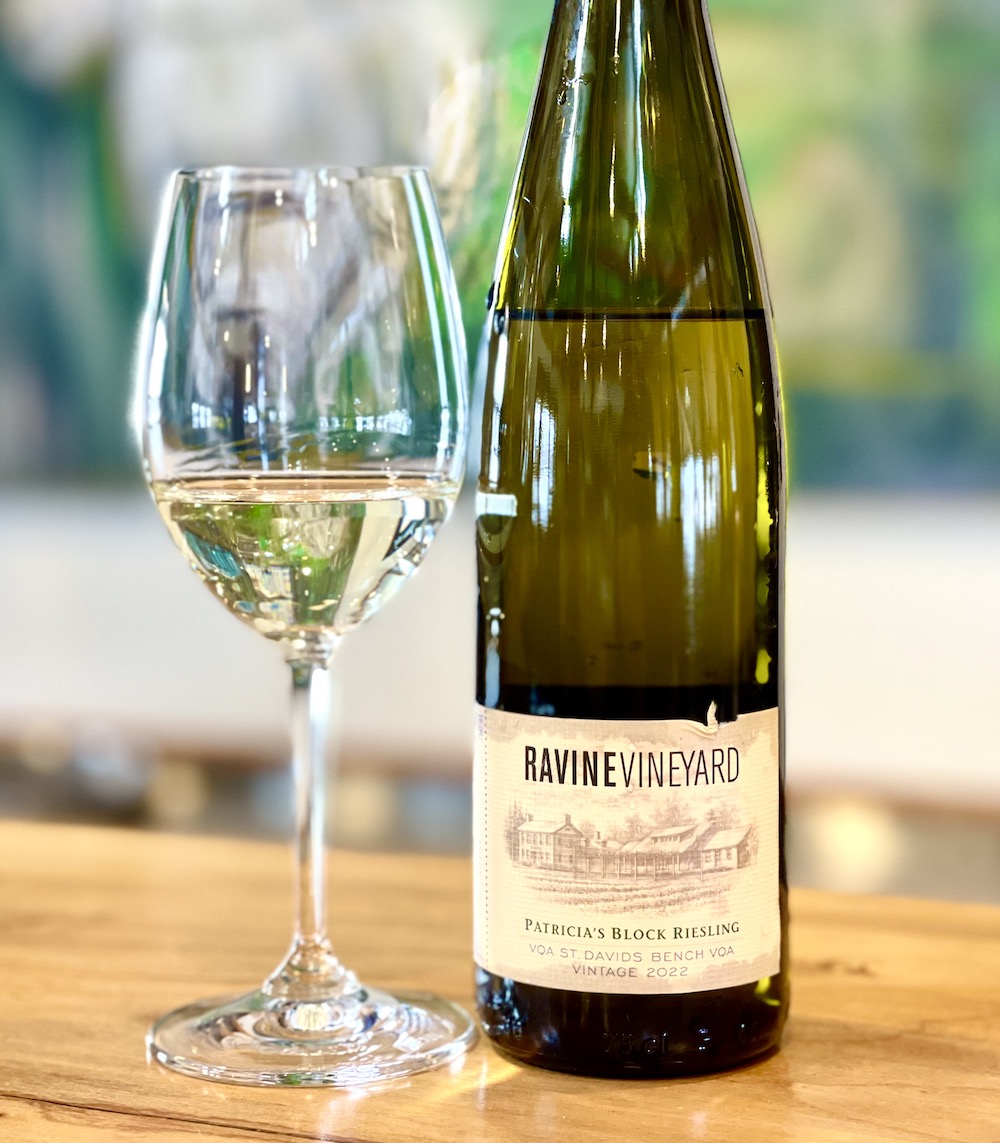
Ravine Vineyard Patricia’s Block Riesling 2022 ($32, 93 points) — Patricia’s Block is from the estate organic home vineyard viewed at the back of the restaurant. This small lot wine is single berry sorted with careful attention on ripe, but not botrytised, fruit. This is a drier style than the Small Batch Riesling with a nose of lemon oil, ripe yellow pear, lime, wet stones, and a subtle floral note. It’s expressive on the palate, or as winemaker Lydia Tomek said, “loud, focused and pristine,” with fleshy apple, lemon chiffon, lime, a touch of pear and grapefruit that’s all perfectly balanced by the racy acidity on the finish. Can age this 10+ years.
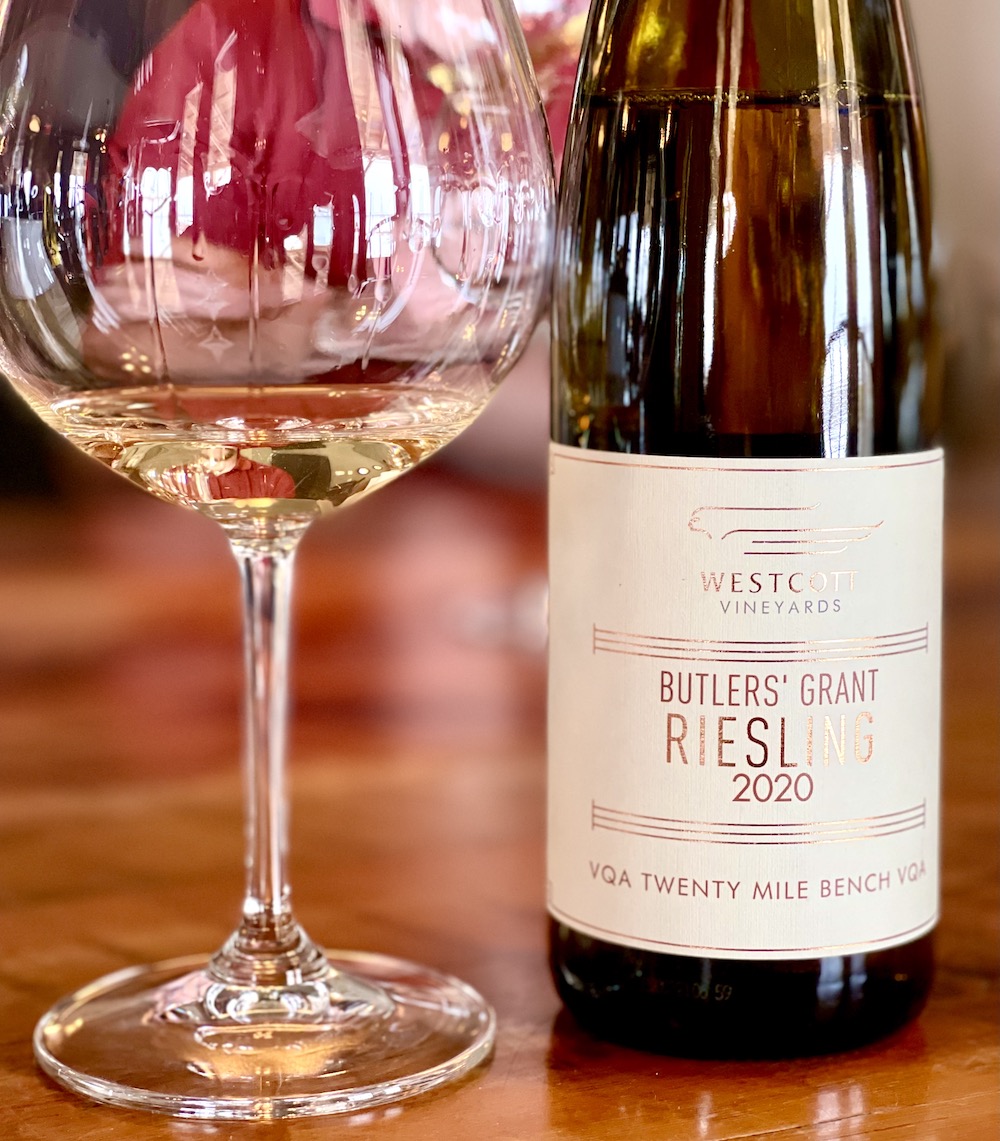
Westcott Butlers’ Grant Vineyard Riesling 2020 ($22, 93 points) — From the oldest vines planted at the Butlers’ Grant Vineyard, the grapes were wild fermented (like all wines at Westcott) and finished with just 10 g/l. It opens with a stunning nose that shows a tsunami of ginger, lime cordial, nectarine, flinty minerality and lemon blossoms. It has gorgeous texture with subtle petrol emerging to go with lemon and lime zest, peachy/stone fruits, ginger, and a long, vibrant finish. Even though Westcott releases its wines late, I would still love to see how the petrol develops from this warm vintage Riesling over time. Only 10% abv. Great value here.
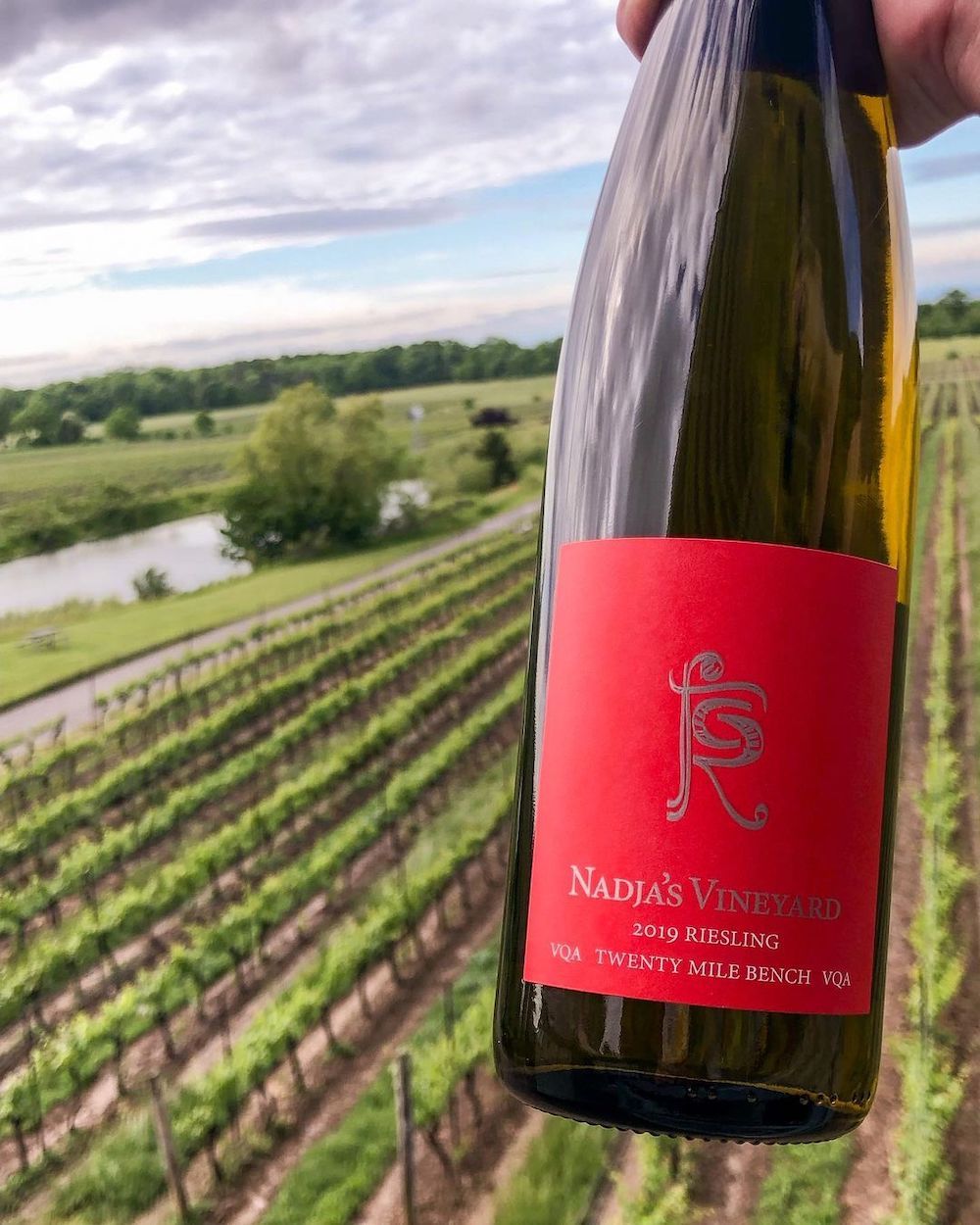
Flat Rock Nadja’s Vineyard Riesling 2019 ($37, 93 points) — The nose is intensely floral with limestone minerality, bright green apple, pear, melon, and a melange of citrus accents. While there is a modest 11 g/l of RS on the palate this feels perfectly dry thanks to the electric acidity. The first impression on the palate is the chalky vein of minerality with crisp stone fruits, lemon-lime notes, melon, and a mouth-watering finish. Lots of potential to cellar 10+ years. In fact, I tasted a 2009 Nadja’s a year ago and it was still going strong with a dynamic nose of grapefruit, lime, apple, subtle petrol notes and steely minerality that has plenty of life in it. A beauty of wine and quite an accomplishment for Flat Rock after this wine was named Best in Show and awarded 97 points at the Decanter World Wine Awards last year.
A mind-blowing cider from West Ave.
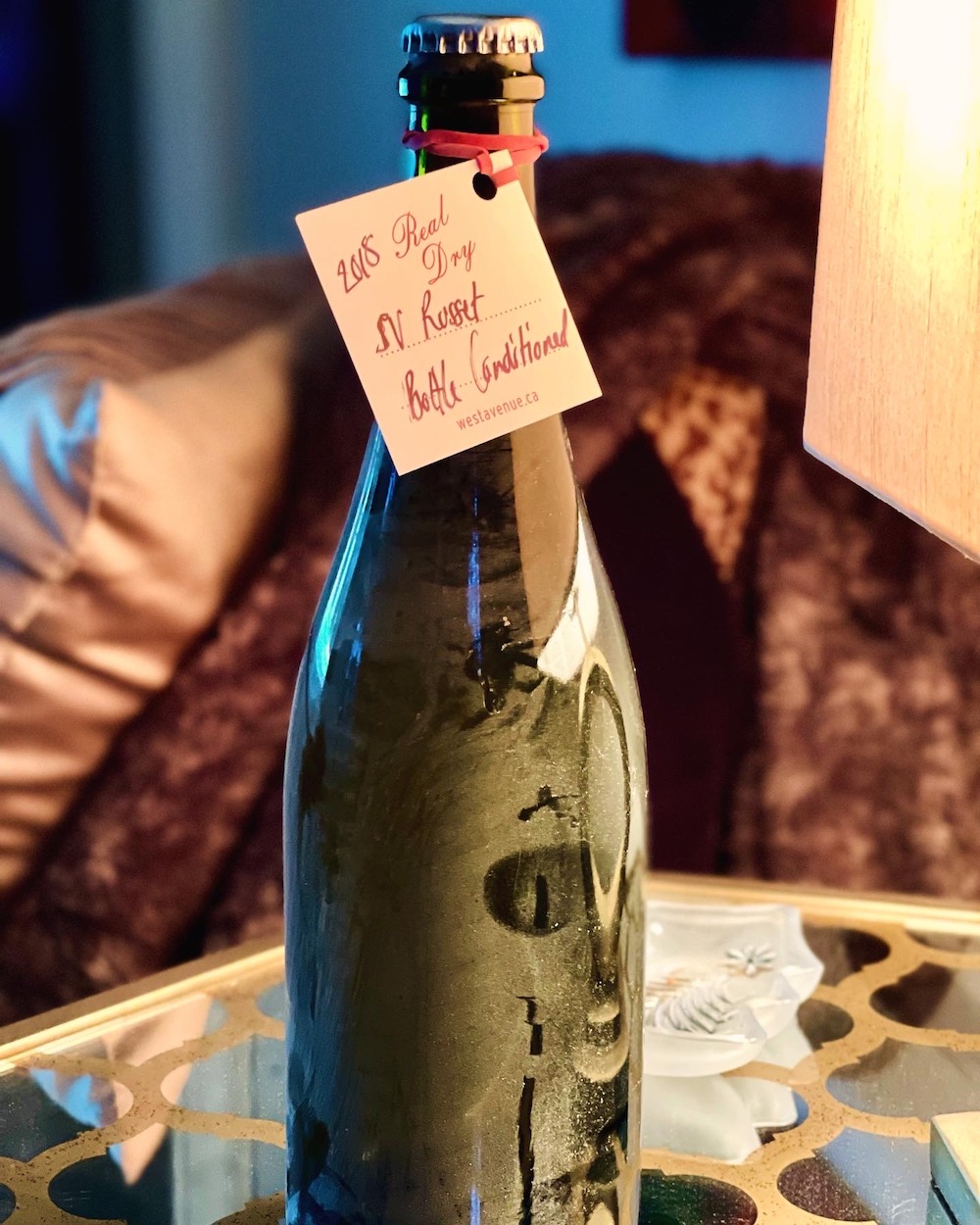
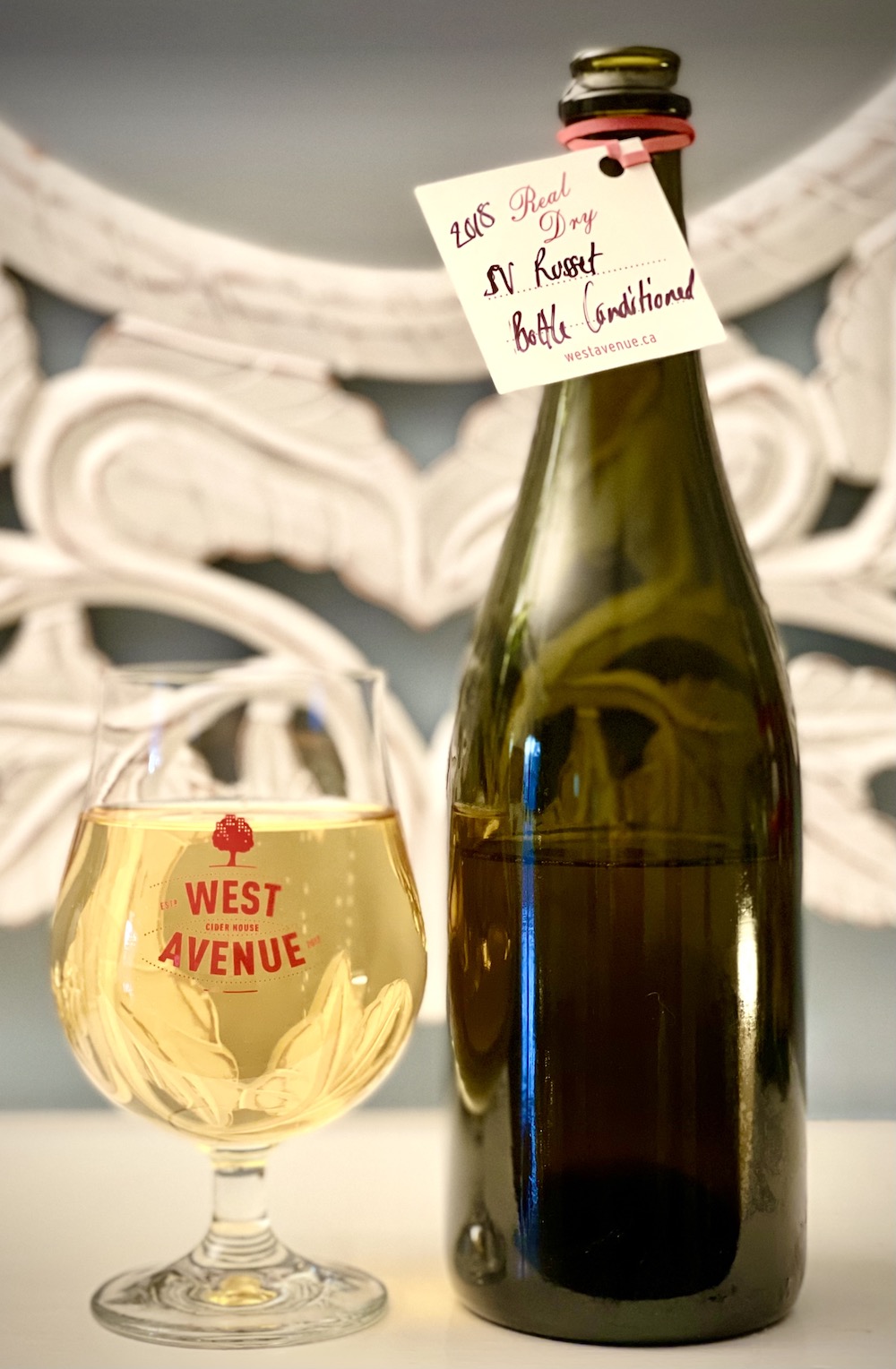
West Avenue Cider SV Russet 2018 (likely $20 and maybe released this spring, 95 points) — You don’t see an Ontario cider like this very often. It is a single vineyard (SV), single orchard (the estate’s Somerset organic vineyard from the first harvest), and a single apple variety golden Russet that was fermented in steel for six months then transferred to a white wine barrel for 12 months and bottled with a splash of sugar for in-bottle conditioning “with every intention of finishing it Champagne style (riddling, dosage, cork, cage).” West Avenue owner and cider maker Chris Haworth told me, “but Covid hit so it’s still in a bottle awaiting the next steps.” I got a preview of one of the dusty, unlabeled bottles, just before Christmas and was absolutely floored by this beauty. I’m not sure what Haworth is going to do with this bottle-conditioned cider, but it seems very complete to me as is and will only get better in the bottle as it ages. After refrigerating to a very cold temperature, as instructed, and letting it warm in the glass, it poured a golden colour with a lively bead, then lovely freshening saline notes, lemon curd, sharp apple, and an interesting lick of barnyard/funk/umami notes that add complexity and wonder. It’s so bright and lifted on the palate from razor sharp acidity propelled by fine effervescence, fresh cut green apple, earthy/savoury notes, and citrus zest that keeps this taut and energized through a thrill-ride of a finish. I would cellar for a time, or maybe on release it will become more rounded. This is the kind of cider that moves the category forward.
Niagara wines coming to
Vintages Jan. 6 and 20
January isn’t the greatest month of the year for local wines coming to LCBO shelves. There just aren’t a lot of choices. But here is what is available this month, nonetheless. Wines in Niagara has not reviewed any of these wines.
Vintages now
• Kew Vineyards Pinot Grigio 2019 ($15)
• Lakeview Bourbon Aged Cabernet Franc 2019 ($35)
• Thirty Bench Winemaker’s Blend Cabernet Franc 2020 ($27)
Vintages Jan. 20
• Marynissen Chardonnay 2021 ($17)
• Creekside Red Tractor Cabernet/Merlot 2010 ($18)
• Kew Soldier’s Grant 2019 ($20)
• Thirty Bench Winemaker’s Blend Red 2020 ($27)







Comment here